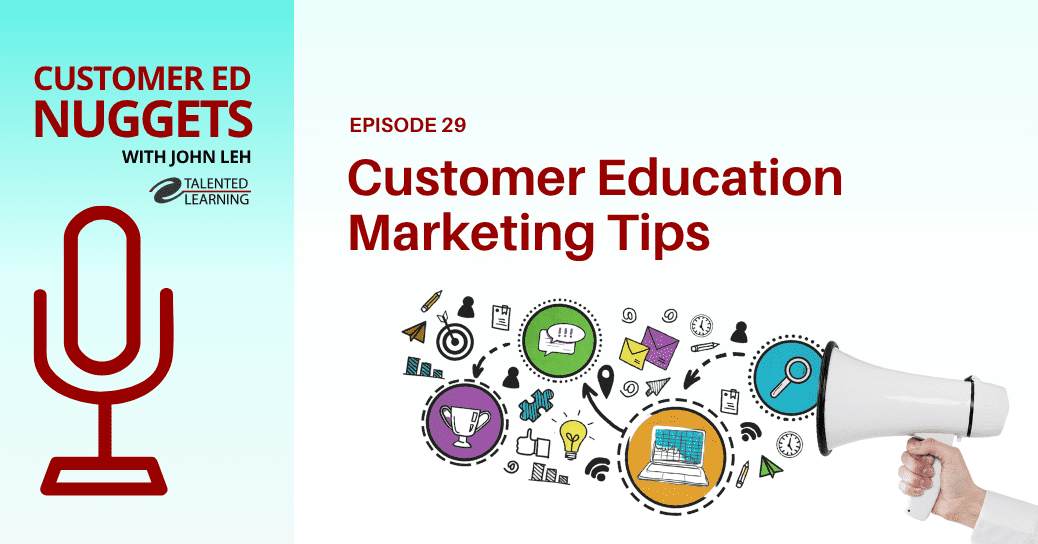
LMS consolidation is all the rage in today’s enterprise learning world. But why? The concept isn’t new. So, what’s behind this recent surge?
The need for LMS consolidation has skyrocketed over the past two decades. When SaaS became a standard for corporate software distribution, top-down corporate purchasing was upended by individuals who used company credit cards to license applications directly. Soon, decentralized buying led to bloat.
Now, CIOs are taming the chaos by evaluating their tech stacks. They’re searching for ways to reduce redundancy, improve efficiency, strengthen security, and cut unnecessary costs. Eliminating duplicate systems is low-hanging fruit. But determining which elements of a learning stack to remove, combine or replace isn’t easy.
If you’re considering LMS consolidation, what should you keep in mind? As an independent learning systems consultant, I specialize in complex, global LMS consolidation. So, in this article, I’ll walk through common questions like these:
- When does system consolidation make sense?
- What are the risks of LMS sprawl?
- Why is LMS consolidation worth the effort?
- Which practices help companies move through the LMS consolidation process?
Don’t miss what’s happening at the leading edge of enterprise learning technology! Get our weekly email brief. SUBSCRIBE HERE →
When Does LMS Consolidation Make Sense?
Accumulating too many learning systems is surprisingly easy. It might start modestly enough with an LMS for employees, and perhaps another for partners, customers, or special projects. Then, over time, duplicate platforms creep in to support different regions, business lines, brands, or countries. Toss in some mergers and acquisitions, and suddenly you’ve inherited even more systems.
Eventually, someone steps back and looks at the bigger picture. They tally up the technical debt of costs, complexity, vendor management, manual workarounds, content and process duplication, and missed opportunities that come from managing multiple LMSs at once.
That’s when the case for consolidation becomes clear and the real work begins.
How are companies succeeding with LMS consolidation and other learning systems initiatives? Get inspired by dozens of stories in our free LMS Case Study Directory →
The Massive Cost of Juggling Too Many LMSs
At first, maintaining multiple learning systems may seem like a necessary trade-off to support diverse teams, audiences, or priorities. But the longer those systems run in parallel, the more friction builds, and the more you’ll pay for inherent inefficiencies.
Soon, you’ll be weighed down with costly issues from all corners:
- Duplicate Content and Licensing
When working in isolated silos, training teams are likely to create, customize or purchase the same (or highly similar) content.
- Inconsistent User Experience
Individual users are forced to navigate multiple logins, interfaces, and data sources, depending on their relationship with your organization.
- Fragmented Reporting
When data is spread across disconnected systems, there is no clear way to track training progress, prove compliance, measure learning impact across the organization, or prioritize improvements.
- Integration Overload
Without a shared connection, each LMS requires its own direct link to HR, CRM, ecommerce, and analytics tools. This kind of footprint is fragile, expensive, and hard to maintain or scale.
- Administrative Bloat
Every platform brings its own set of processes, permissions, user roles, and support tickets. Multiply that baseline by five or more systems, and you’re clearly burning time on repetitive tasks.
The truth is, LMS sprawl is never worth the cost. When learning is delivered and supported in disconnected pockets, it’s impossible to scale what works or fix what doesn’t. It places training on a hamster wheel — perpetually tactical, reactive, and undervalued.
Which learning system is best for you? Check the newest RightFit Solution Grid, based on our team’s rigorous independent research. Learn more and get your free copy →
Why LMS Consolidation is Worth the Work
Combining multiple learning systems under a single roof requires serious planning, budget analysis and executive alignment. But the benefits of LMS consolidation are significant:
- Clear Visibility Across Audiences
A centralized LMS provides a unified view of learning activity, progress and compliance across employees, customers, partners, and regions.
- Consistent Brand Experience
Internal and external audiences engage with a cohesive, modern learning experience that reflects your organization’s identity, objectives, and standards.
- Operational Efficiency
One system means one contract, one support team, one content library, and one set of application integrations to maintain. This reduces complexity and overhead.
- Lower Total Cost of Ownership
A single licensing agreement strengthens purchasing leverage while eliminating redundant platforms, vendors, and administrative investment.
- Less Manual Work
Workarounds and duplicate processes disappear. Administrators and learning teams redeem time to focus on more strategic priorities.
- Improved Data and Reporting
Centralized reporting capabilities let you track learning outcomes and connect them directly to business performance metrics.
- Faster Growth and Agility
Expanding to new regions, audiences or brands is easier when a learning infrastructure is governed to scale and support future acquisitions and reorganizations.
- More Innovation Capacity
When teams are no longer bogged down by system maintenance, they can focus on innovation. For example, they can add value by improving personalization, automation, AI, or social learning strategies.
- Better Knowledge Sharing
A single platform makes it easy to share and reuse content across departments, business units, and geographies and beyond. This reduces duplication and speeds training delivery.
- Simplified Governance and Training Administration
Unified learning systems provide clarity around roles, responsibilities, permissions, and workflows. This makes it much easier for your infrastructure to grow and evolve with your organization.
With an optimized learning tech stack, you’re not just reducing technology costs. You’re also paving the way for scale, consistency, and strategic alignment across your extended enterprise.
Celebrate the best in learning tech innovation! See our latest annual LMS Award recipients, featuring the top 10 solutions in 6 categories. See all the winners →
Proven Practices for LMS Consolidation
Folding multiple systems into a single platform is a complex process. But when LMS consolidation is done right, it reduces waste, improves learning outcomes, and puts you on a path for long-term success.
Based on my hands-on experience with LMS consolidation projects, I recommend these steps:
1. Establish Governance and Engage Stakeholders Early
Before you select a new or existing platform, define ownership, roles, permissions, and decision-making processes. Engage business unit leaders, HR, IT, compliance, customer education, and regional stakeholders from the beginning. Their buy-in is essential, especially with LMS consolidation, because this is a change management process with far-reaching consequences. Governance provides structure and clarity, while stakeholder engagement ensures that the solution you deploy reflects real-world needs from across your organization.
2. Hire an Independent Expert
A neutral consultant can bring structure, insight, and objectivity to the LMS consolidation process. From internal discovery to vendor evaluation, you can lean on an experienced adviser to help you move faster, avoid mistakes, and build organizational alignment that lasts long after go-live.
3. Define Requirements and Understand the Market
Use tools like our free Adaptive LMS Requirements Survey to clarify your business goals, learner audiences, workflows, integrations, and functional technology needs. It’s also wise to take some time to research how the LMS market works, the strengths and weaknesses of various platforms, how licensing models vary, and which vendors specialize in your use cases.
4. Map Your Learning Ecosystem and Build a Content Inventory
Catalog every LMS you are using. For each system, identify who it serves, what content it contains, how it integrates with other systems, and how it is administered. Then audit and evaluate each platform’s content, so you can decide what to migrate, archive or rebuild. These steps are vital to uncover duplication, inefficiencies, and hidden costs you will want to address during LMS consolidation.
5. Define Requirements for All Audiences
Your new LMS needs to serve multiple learner groups — employees, customers, partners, and others. Gather detailed requirements by audience and use case, covering workflows, compliance, eCommerce, branding, reporting, roles, and technical integrations.
6. Run a Structured RFP Process
Once your requirements are clear, issue a formal RFP. This forces vendors to respond to your needs directly and helps you compare platforms on a level playing field. You’ll reduce risk, avoid surprises, and keep your selection process objective.
7. Shortlist and Go Deep
Narrow your vendor list to two or three finalists and dive in. Meet the teams, explore implementation models, ask detailed questions, and understand how each vendor supports complex, multi-audience deployments. Don’t just rely on marketing slicks or surface demos.
8. Include a Proof-of-Concept
Test shortlisted systems using real content, users, and workflows. Build scripted use cases that reflect your day-to-day reality. A hands-on pilot will expose gaps and give stakeholders confidence in the final decision.
9. Plan for Content Migration and Cleanup
Not all content should move. Use your earlier inventory to determine what stays, what goes, and what needs updating. Prioritize high-value content and allocate resources for QA, metadata cleanup, and reformatting where needed.
10. Roll Out in Phases
Avoid launching to all audiences at once. Roll out by business unit, region or learner type. Use each phase to validate the configuration, gather feedback, and refine support processes before deployment across the enterprise.
A Final Note on LMS Consolidation
One of the most powerful ways to streamline a bloated learning stack is through strategic LMS consolidation. It reduces duplication, simplifies administration, and creates a unified foundation that serves internal and external audiences alike. But it’s not just about selecting a robust learning platform.
High-impact results depend on well-defined business needs, a coherent governance model, cross-functional alignment, and a disciplined approach to vendor evaluation and implementation. Ultimately, your LMS consolidation efforts should make it easier to execute on your learning strategy, orchestrate training across the organization, and unlock learning at scale.
Also, keep in mind that effective LMS consolidation is not just a one-shot project. Smart companies set themselves up for long-term success by committing to continuous processes that ensure their infrastructure remains streamlined on an ongoing basis. The process is not easy, but you’ll create business value that is real, measurable, and lasting.
Thanks for reading!
How Can LMS Consolidation Work for You? Let’s Talk
If you’re struggling with too many learning systems, what’s your next move? I’m happy to point you in the right direction. Schedule a free 30-minute consult with me, John Leh…
*NOTE TO SALESPEOPLE: Want to sell us something? Please contact us through standard channels. Thanks!
Share This Post
Related Posts
Developing Digital Literacy: A Roadmap for the Future of Banking
How does digital literacy training help financial services companies strengthen customer and employee relationships? Learn how major banks make it happen...
Measuring Customer Training ROI: Which Metrics Matter Most?
How can companies prove the value of customer education? It starts by understanding which metrics are best for measuring customer training ROI...
Top Customer Education Marketing Tips: Customer Ed Nugget 29
Thoughtful promotion can make a customer learning program shine. But which customer education marketing moves matter most? Find out on this mini-podcast...
2025 LMS Awards: Celebrating the Best Enterprise Learning Systems
Which enterprise learning systems are the best? Find out about the top solutions, as independent learning tech analyst John Leh reveals winners of our 2025 LMS Awards...
4 Crucial Marketing Mistakes to Avoid: Customer Ed Nugget 28
Customer education success depends on strong marketing strategies and tactics. How can you avoid marketing mistakes that undermine your efforts? Find out on this mini-podcast...
Workday Buys Sana: A Second Chance for Enterprise Learning?
Workday just announced plans to acquire Sana Labs. What does this mean for the future of enterprise learning? Our Lead Analyst, John Leh, weighs in...
Selling Enterprise Software? Choose Pilot Programs for the Win
Selling B2B software is a highly complex process. How can both buyers and sellers succeed? Focus on the enterprise buying motion, and pilot programs, in particular. Follow these expert tips...
Compliance Training: Moving From Obligation to Opportunity
How can you transform compliance training from a checkbox exercise to a powerful culture-building engine? Try these proven strategies and tactics...
AI in Training: What Pros and Cons Should You Consider?
AI in training is a powerful double-edged sword. How can you make the most of AI as an asset without being blindsided by liabilities?



















FOLLOW US ON SOCIAL